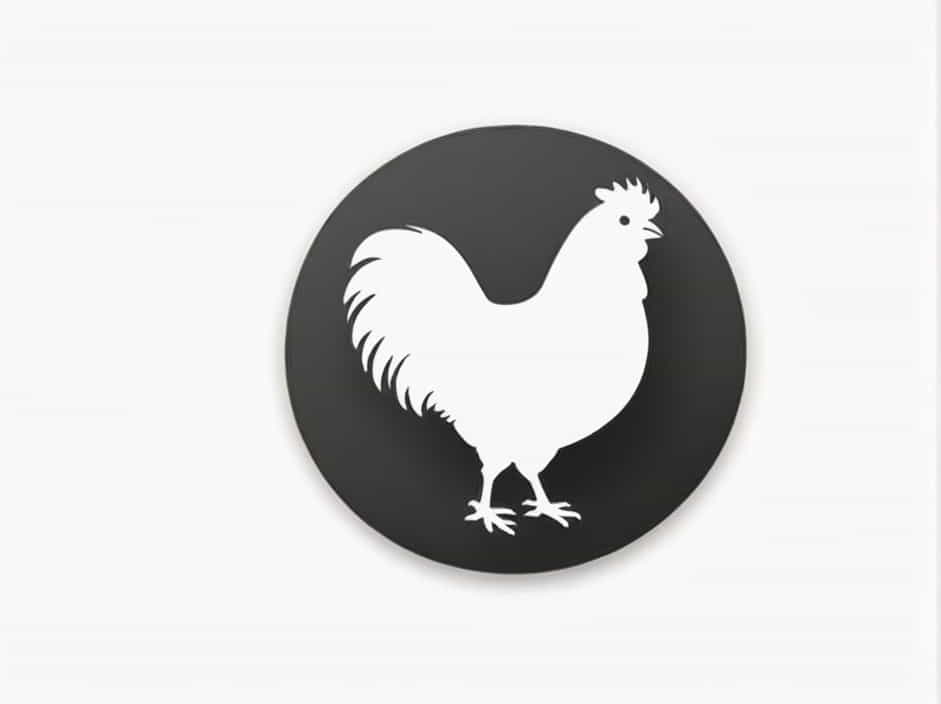If you’ve noticed that your chicken’s comb is flopped over, you might be wondering if this is normal or a sign of an underlying issue. The comb, the red fleshy structure on top of a chicken’s head, plays an important role in regulating body temperature and indicating overall health. A drooping or floppy comb can be completely harmless or a sign of illness, dehydration, or nutritional deficiencies.
In this topic, we’ll explore the causes of a flopped-over comb, what it means for your chicken’s health, and when you should be concerned.
1. Understanding the Function of a Chicken’s Comb
The comb serves several purposes in a chicken’s physiology, including:
- Regulating Body Temperature – Chickens don’t sweat, so their combs help release excess heat.
- Displaying Health and Vitality – A bright red, upright comb typically indicates a healthy and mature chicken.
- Signaling Maturity – In hens, the comb becomes larger and more vibrant when they are ready to lay eggs.
- Attracting Mates – In roosters, a well-developed comb is a sign of strength and dominance.
If your chicken’s comb suddenly flops over, it’s important to check for potential causes.
2. Common Reasons Why a Chicken’s Comb Flops Over
1. Natural Genetics and Breed Traits
Some chicken breeds naturally have floppy combs, and it is not a cause for concern.
- Leghorns, Andalusians, and Minorcas are examples of breeds with large, floppy combs.
- Their combs tend to lean to one side because they are too heavy to stay upright.
If your chicken belongs to one of these breeds, a droopy comb is completely normal.
2. High Temperatures and Overheating
Since combs help with heat regulation, a chicken that is experiencing hot weather may have a flopped-over comb as it tries to cool down.
Signs of heat stress include:
- Panting
- Spreading wings away from the body
- Lethargy
What to do:
- Provide plenty of fresh water.
- Ensure there is shade and ventilation in the coop.
- Offer cooling treats like frozen fruits.
3. Dehydration and Poor Circulation
A comb that turns pale, shriveled, or flopped over may be a sign of dehydration or poor blood circulation.
Causes:
- Lack of clean drinking water
- Hot weather causing fluid loss
- Underlying health conditions affecting circulation
What to do:
- Ensure your chickens have constant access to clean water.
- Add electrolytes to their water during hot weather.
4. Illness and Disease
A sudden change in a chicken’s comb could indicate an underlying illness. Some common diseases that affect the comb include:
Fowl Pox
- A viral disease causing scabs or lesions on the comb.
- May lead to drooping or discoloration.
Respiratory Infections
- Diseases like infectious bronchitis or mycoplasma can cause poor circulation, leading to a floppy or discolored comb.
Coccidiosis
- A parasitic disease affecting the digestive system, often leading to weakness and pale combs.
What to do:
- Observe for other symptoms like lethargy, weight loss, or labored breathing.
- Quarantine sick chickens to prevent the spread of disease.
- Consult a vet for proper treatment.
5. Maturity and Egg Production in Hens
In young hens, the comb develops as they reach laying age. Some hens naturally have floppy combs when they start laying eggs, especially if their comb grows larger than usual.
If your hen is healthy, eating well, and laying eggs normally, a flopped-over comb is not a problem.
6. Nutritional Deficiencies
A lack of essential vitamins and minerals can weaken a chicken’s comb, causing it to droop.
Key nutrients that affect comb health:
- Protein – Essential for strong comb development.
- Iron – Deficiency may cause pale, weak combs.
- Vitamin A and E – Needed for immune function and blood circulation.
What to do:
- Feed a balanced diet with high-quality poultry feed.
- Offer leafy greens, seeds, and occasional protein treats.
- Consider supplements if your flock shows signs of deficiency.
7. Molting Season and Hormonal Changes
During molting season, chickens shed old feathers and regrow new ones. This process takes a lot of energy and nutrients, which can temporarily cause:
- Floppy or pale combs
- Reduced egg production
- Lethargy
What to do:
- Offer extra protein-rich foods like mealworms or scrambled eggs.
- Be patient—comb health will return to normal after molting ends.
8. Frostbite in Cold Weather
In winter, chickens with large combs are at risk of frostbite. The comb may turn black, swollen, or flop over due to tissue damage.
Prevention tips:
- Apply petroleum jelly to combs before cold nights.
- Ensure the coop is well-ventilated but free from drafts.
- Provide straw bedding to keep chickens warm.
3. When to Be Concerned About a Flopped Comb
While a flopped comb is often harmless, you should monitor your chicken closely for signs of trouble.
Seek veterinary advice if you notice:
- Discoloration (pale, purple, or black comb)
- Weight loss, lethargy, or reduced appetite
- Unusual droppings or respiratory symptoms
- Scabs, lesions, or swelling on the comb
Early detection and treatment can prevent serious health issues.
4. Conclusion
A flopped-over comb in chickens can be completely normal or a sign of an underlying issue. It is important to consider factors such as breed, weather, hydration, health, nutrition, and age before worrying.
By providing proper care, nutrition, and monitoring, you can ensure your chickens stay healthy and happy. If your chicken’s comb suddenly changes in color or texture, it’s always best to investigate and take action if necessary.
